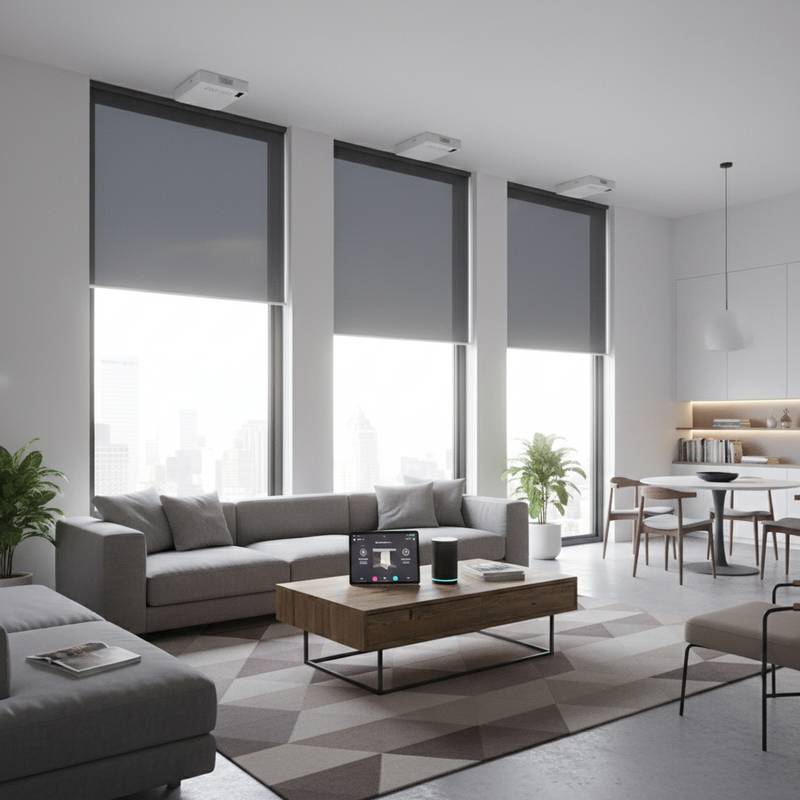Why Retrofit Blinds Are Exploding in Smart Homes
Smart homes focus on practical comfort, convenience, and control rather than futuristic experiments. Window blinds stand out as a key element driving this evolution, surpassing expectations in lighting and security categories. Retrofit smart blinds upgrade existing shades into automated systems without full replacements, appealing to homeowners through their straightforward design, cost-effectiveness, and harmony with current interiors.
The Rise of Retrofit Convenience
Retrofitting upgrades existing items rather than replacing them entirely. In smart homes, this involves adding sensors, motors, or hubs to current fixtures. For blinds, retrofit kits attach directly to present shades, enabling app or voice control.
Homeowners increasingly choose these kits for their ease and compatibility. This trend highlights a priority on user-friendly solutions that integrate into daily routines without demanding major changes.
Why Automated Shades Capture Attention
Automated shades once served only luxury settings, but retrofit options democratize access. These systems work with various blind types, including roller shades and Venetian slats, suiting both renters and owners.
Market data shows steady growth in connected window treatments, valued for comfort and energy benefits. They regulate temperature, minimize glare from intense sun, and secure privacy with minimal effort, yielding tangible daily enhancements.
Energy Efficiency Through Automation
Energy savings form a core advantage of retrofit blinds. Linked to sensors or automation schedules, blinds respond to sunlight or temperature shifts. They close during midday heat to cool interiors or open at dawn for natural light and warmth.
Such controls lessen dependence on HVAC systems, potentially cutting utility costs. Users often notice reductions in bills shortly after setup. The process operates seamlessly, providing benefits without ongoing oversight.
Ideal for Renters and Cost-Minded Owners
Traditional motorized blinds demand professional setup or new components, limiting appeal. Retrofit systems broaden reach with non-invasive installations. Renters attach motors to cords or chains, preserving landlord agreements and allowing easy relocation.
Homeowners benefit from phased upgrades, starting with select rooms. This method tests functionality before broader adoption while maintaining aesthetic investments in custom treatments.
Integration Across Smart Platforms
Enthusiasts seek interconnected devices. Retrofit blinds align with ecosystems like Google Home, Amazon Alexa, and Apple HomeKit. Users establish voice triggers or sequences linking blinds to lights, thermostats, or media setups.
Consider a command for evening relaxation: lights soften as blinds descend. Or sunrise routines raise shades gently, replacing harsh alarms. These connections foster a unified home environment that feels intuitive.
Enhancing Privacy and Security
Retrofit blinds bolster security beyond daily comforts. Integrated with smart networks, they mimic activity during absences, adjusting to suggest presence and discourage intruders.
Certain models react to alarms by closing promptly. In dense urban areas, automated privacy controls offer reassurance, managing visibility effortlessly throughout the day.
Core Technology Driving Adoption
Advancements in components fuel retrofit popularity. Compact motors, powered by rechargeable batteries or solar units, operate quietly. Bluetooth or Wi-Fi connections avoid wiring complexities.
Installation requires securing the motor, app pairing, and position calibration. Built-in sensors monitor light or heat for real-time adjustments, enhancing responsiveness without intervention. Improved durability and connectivity ensure long-term reliability.
Practical Examples from Leading Brands
Brands like Soma, SwitchBot, and Eve MotionBlinds advance retrofit accessibility. Their devices emphasize simple setup, app management, and platform compatibility.
Soma Smart Shades 2 automates rollers with solar motors for sustained power. SwitchBot Blind Tilt secures to wands, coordinating with home scenes. These tools demonstrate how automation integrates without disrupting established setups.
Optimal Timing for Smart Upgrades
Demand for efficient, eco-friendly homes surges. Retrofit blinds address this by merging conservation with usability. As remote work and home leisure rise, control over environments gains importance.
Experts predict category growth with standards like Matter enabling cross-brand harmony. This ensures investments remain viable amid tech progress, building user trust.
Upgrade Your Windows for Everyday Gains
Retrofit blinds signal a move toward attainable smart enhancements. Their blend of economy, eco-friendliness, and control aligns with modern living preferences. Homes become more adaptive and efficient sans extensive overhauls.
Begin with a single window to gauge impacts on routine comfort. As advantages emerge, extending to additional areas follows naturally. Smart evolution builds incrementally, refining existing spaces through targeted improvements.
